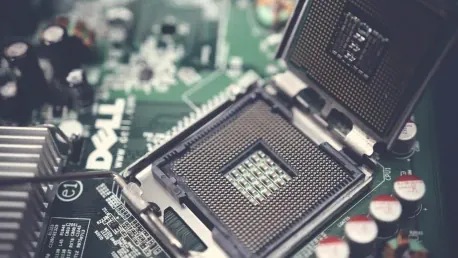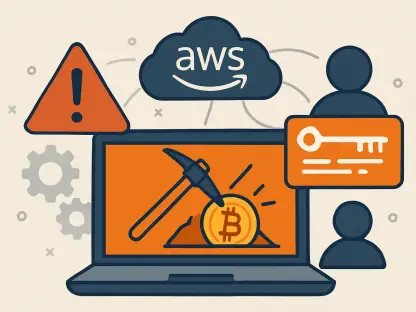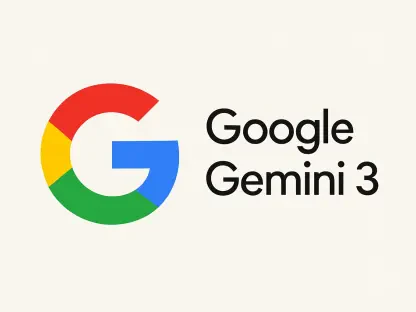Google’s latest advancement in quantum computing technology, represented by the Willow quantum chip, has the potential to revolutionize the field. Quantum computing, a significant leap from traditional binary computing, is poised to transform artificial intelligence (AI), machine learning, and other sectors. This article delves into the intricacies of quantum computing, the capabilities of Google’s Willow chip, and the broader implications for various industries.
Understanding Quantum Computing
The Basics of Quantum Computing
Quantum computing fundamentally differs from classical computing in how information is processed. Classical computing relies on binary bits that exist in states of either ‘on’ or ‘off.’ In contrast, quantum computing uses qubits, which can exist in multiple states simultaneously. This property, known as superposition, exponentially enhances computational power, allowing quantum computers to solve complex problems much faster than classical computers. Additionally, qubits can leverage another quantum phenomenon called entanglement, wherein the state of one qubit can be directly correlated with the state of another, even if separated by great distances.
Superposition and entanglement grant quantum computers their incredible capabilities, making them particularly suitable for tasks requiring massive parallel processing. These could be anything from cryptographic code breaking to complex molecular modeling. While classical computers follow a linear path in problem-solving, quantum computers can evaluate numerous possible solutions at once, drastically cutting down computational time. As researchers harness these properties to develop more sophisticated quantum algorithms, we’re on the cusp of seeing quantum computing redefine not just AI, but a myriad of other fields.
The Role of Qubits
Qubits are the building blocks of quantum computing. Unlike classical bits, qubits can represent both 0 and 1 at the same time, thanks to the principles of quantum mechanics. This ability to perform multiple calculations simultaneously is what gives quantum computers their immense power. Additionally, qubits can be entangled, meaning the state of one qubit can depend on the state of another, even if they are far apart. This entanglement further boosts computational efficiency and speed.
The unique properties of qubits arise from the world of quantum physics, where particles do not behave in a predictable manner. Instead, they exhibit probabilistic behavior, allowing multiple possibilities to be true at the same time. This capability, while incredibly powerful, also poses a significant challenge in terms of qubit stability and error correction, as qubits are susceptible to decoherence and other quantum noise factors. Researchers are continuously exploring ways to maintain coherence over longer periods, paving the way for more reliable quantum computations.
The Willow Quantum Chip
Unveiling Willow’s Capabilities
Google’s Quantum AI lab has made significant strides with the introduction of the Willow quantum chip. Hartmut Neven, founder of the lab, highlighted Willow’s unparalleled performance. The chip executed a computation in under five minutes that would take today’s fastest supercomputers an estimated 10 septillion years. This breakthrough underscores the potential of quantum computing and supports theories like David Deutsch’s multiverse theory, which suggests quantum computations may occur in multiple parallel universes.
The unprecedented speed and efficiency of the Willow quantum chip represent a leap forward in practical quantum computing applications. Leveraging qubits to perform highly complex and otherwise intractable computations, Willow signifies a monumental step towards operational quantum computers. Such capabilities open the door to solving problems previously considered unsolvable, advancing both theoretical and applied sciences. With precise engineering and quantum error correction strategies, the Willow chip stands as a flagship milestone in Google’s quest to harness quantum mechanics for transformative computational powers.
Practical Applications and Potential
The Willow chip’s capabilities extend beyond supercomputing feats. It can perform foundational computational tasks essential for AI, such as collecting intractable training data, optimizing learning architectures, and modeling systems reliant on quantum effects. These capabilities hold promise for discovering new medicines, developing more efficient batteries for electric vehicles, and accelerating breakthroughs in fusion energy and other progressive alternatives. Many of these advancements are unattainable with classical computers and await the unlocking power of quantum computing.
Beyond theoretical prowess, Google’s Willow chip could revolutionize various industries by addressing computational bottlenecks that traditional computers struggle with. Quantum-enhanced AI could result in more accurate predictive modeling, rapid big data analysis, and innovative solutions in materials science. For instance, pharmaceutical companies could design new drugs at an unprecedented pace by simulating molecular interactions more precisely. Meanwhile, advancements in battery technology and energy efficiency could spearhead the transition to sustainable energy sources, emphasizing quantum computing’s multifaceted potential impact.
Market Trends and Economic Outlook
Recent Market Behavior
The past week saw an initial selloff heading into Christmas, setting up for the anticipated “Santa Claus” rally at year-end. Encouragingly, Christmas Eve witnessed a rebound as the markets climbed above the crucial 50-day moving average (DMA). Despite a subsequent selloff on Friday that successfully retested the 50-DMA, there’s an expectation of buying in the coming week as portfolio window dressing concludes, and traders position themselves at the start of January.
Market patterns have historically shown a tendency for rallies following significant sell-offs, especially during holiday seasons when trading volumes are typically lower. Analysts suggest that the sentiment driving the Santa Claus rally is rooted in investor optimism and the strategic realignment of portfolios. This speculative trend, like all market behaviors, is contingent upon external economic factors and the overall health of the financial ecosystem. The interplay between technical indicators such as the DMA and investor sentiment remains a focal point for traders looking to optimize their strategies.
Technical Analysis and Investor Sentiment
Currently, market momentum and relative strength indicators are seen as weak but could attract buyers if markets surpass the 20-DMA. A prevailing sell signal limits potential price appreciation, with a 24% chance that a rally might not materialize at all. As such, portfolio risk management remains crucial until the market decisively breaks in one direction or another. Additionally, yield spreads are being closely monitored, having dipped to their lowest levels since the Financial Crisis. Historically, such low yield spreads correlate with excessive market optimism, often ending poorly. This cautionary stance suggests that investors should consider more aggressive portfolio risk reduction based on upcoming yield spread movements.
The delicate balance between market optimism and caution is mirrored in the technical analysis indicators. Investors are largely aware that weak momentum signals might precede a market downturn, prompting a conservative approach to risk management. Monitoring yield spreads offers insight into the broader economic climate, with narrow spreads frequently signaling overconfidence that could lead to sharp market corrections. The evolving dynamics of yield spreads and their historical context underscore the importance of strategic foresight in navigating potential market volatility.
Upcoming Economic Data
Key Economic Indicators
In the broader economic landscape, the current week marks the close of the holiday season, highlighted by light economic data releases. The week kicks off with the Chicago PMI for December and pending home sales for November. Tomorrow, the release of the S&P/Case-Shiller Home Price Index for October is anticipated, with expectations of a year-over-year home price increase falling to 4.1% from September’s 4.6%. Markets will close on New Year’s Day, Wednesday.
Economic forecasts suggest that softened housing market data could indicate broader trends in consumer confidence and purchasing power. PMI figures offer a snapshot of manufacturing sector health, which directly influences macroeconomic stability. Analysts often look at these indexes to gauge economic momentum, informing decisions on investments and economic policies. Tracking such indicators helps discern patterns and potential shifts within the economic landscape, essential for crafting resilient and adaptive economic strategies in times of transition and uncertainty.
Manufacturing and Inflation Data
Thursday initiates 2025 with the S&P Global Manufacturing PMI forecasted to decline to 48.3 in December from 49.7 in November. The week’s most significant data release arrives on Friday with the ISM Manufacturing Index, projected to drop to 48.3 in December following November’s increase to 48.4. Additionally, the Manufacturing Prices Index is expected to rise to 52.2 from November’s 50.3, signaling inflationary tendencies in manufacturing costs.
The anticipated decline in manufacturing indices reflects potential slowdowns in production activities, raising concerns about the industrial sector’s vitality. Rising prices within manufacturing signal inflationary pressures that could cascade through the economy, affecting prices across goods and services. This information is vital for policymakers and businesses as they adjust strategies to mitigate the impact of inflation while bolstering economic growth. The data hints at broader economic trends, providing critical insights for navigating the complexities of the coming fiscal landscape.
Healthcare Inflation and the Affordable Care Act
The ACA’s Impact on Healthcare Costs
The Affordable Care Act (ACA) aimed to enhance healthcare access during a time when roughly 20 million Americans were uninsured. The bill intended to curb escalating costs by introducing a government mandate. However, the intervention of “Big Government” frequently results in less than ideal outcomes, as articulated by former President Ronald Reagan’s infamous observation concerning government aid.
The ACA’s ambitious framework led to significant changes in the healthcare landscape, from insurance coverage expansions to the introduction of health exchanges. Despite the broad scope of these reforms, healthcare costs have continued to rise, posing challenges for both consumers and providers. Critics argue that regulatory complexity and inefficiencies have compounded problems within the system. Additionally, ongoing debates about the effectiveness of the ACA underscore the persistent struggle to balance cost control with accessible, quality care within a market-driven economy.
Persistent Challenges and the Debate
Google has made a groundbreaking advancement in quantum computing technology with its Willow quantum chip, which holds the potential to dramatically transform the field. Unlike traditional binary computing, quantum computing leverages the principles of quantum mechanics to perform complex calculations at unprecedented speeds. Google’s Willow chip could play a pivotal role in revolutionizing artificial intelligence (AI) and machine learning, among other sectors.
By harnessing the power of quantum bits, or qubits, the Willow chip can process vast amounts of data far more efficiently than today’s most advanced classical computers. This leap forward offers promising applications in various industries, from healthcare and pharmaceuticals to logistics and financial modeling.
The introduction of this technology marks a significant milestone, as it brings us closer to solving problems previously thought to be intractable with traditional computing methods. As quantum computing continues to evolve, the Willow chip could be the key to unlocking new capabilities and driving innovation across multiple disciplines.









